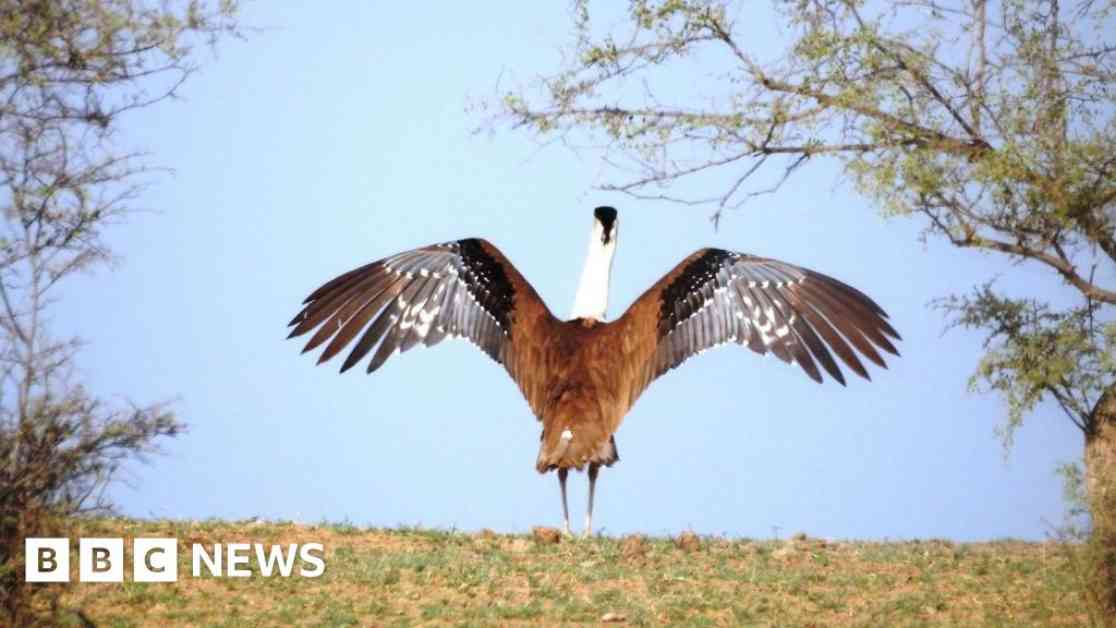The recent successful hatching of a great Indian bustard chick through artificial insemination in Rajasthan has brought hope for the conservation of this critically endangered bird species. The great Indian bustard, which is the state bird of Rajasthan, has seen a drastic decline in its population due to habitat loss, poaching, and collisions with overhead power lines.
Conservation efforts have been underway to protect this majestic bird, with the establishment of breeding centers in Jaisalmer and Ramdevra. These centers aim to breed and raise great Indian bustards with the goal of eventually releasing them back into the wild. However, one of the challenges faced by conservationists is the imprinting of birds on human handlers, which reduces their ability to survive in the wild.
The loss of habitat due to the encroachment of renewable energy farms has also posed a threat to the great Indian bustard population. The increased human presence in these areas has led to an influx of stray dogs that prey on the birds and destroy their eggs. Additionally, the presence of power lines has resulted in numerous flying accidents, further endangering the birds.
Conservationists stress the importance of preserving the natural habitat of the great Indian bustard to ensure their long-term survival. The recent Supreme Court judgment overturning the order to move power lines underground in bustard habitats has raised concerns among conservationists. While renewable energy firms have welcomed the decision, conservationists argue that protecting biodiversity should also be a priority.
The interplay between climate change, biodiversity, and development issues is a complex one, and finding a balance between these competing interests is crucial for the conservation of species like the great Indian bustard. As efforts continue to protect and preserve the habitat of these magnificent birds, it is essential for all stakeholders to work together towards a sustainable future for both wildlife and humans.
